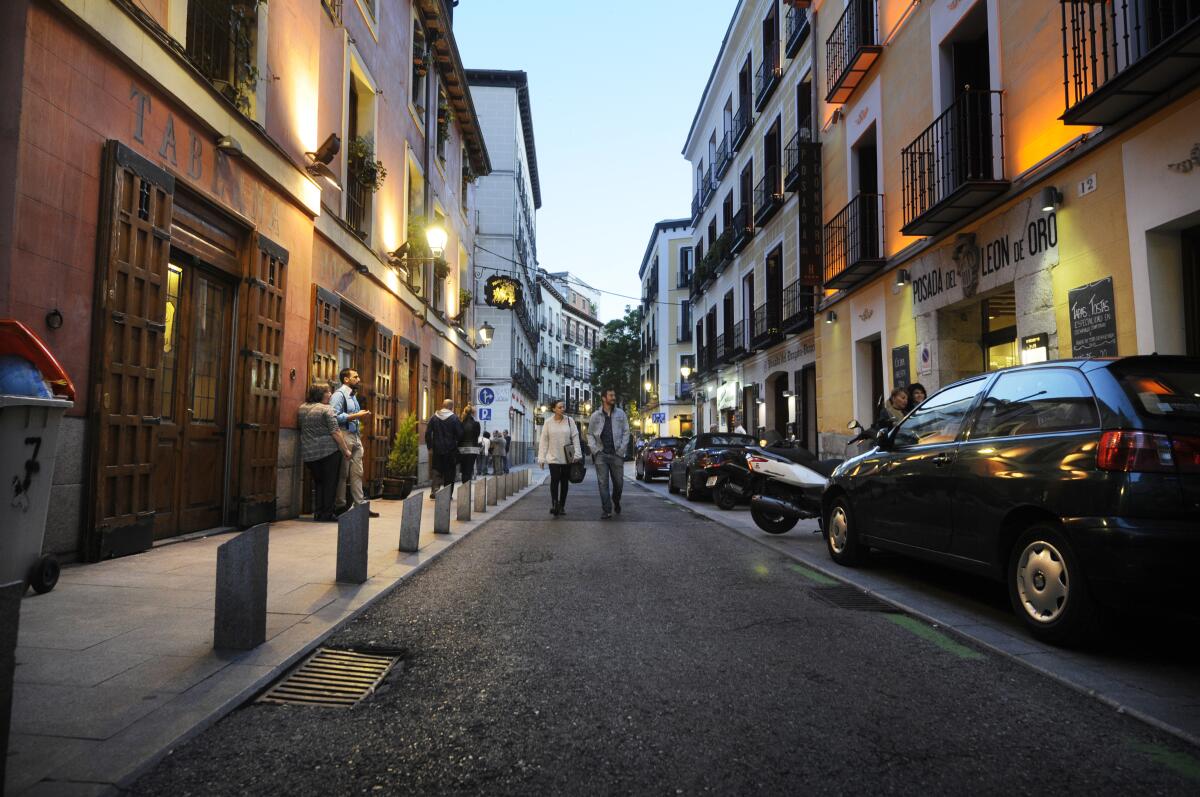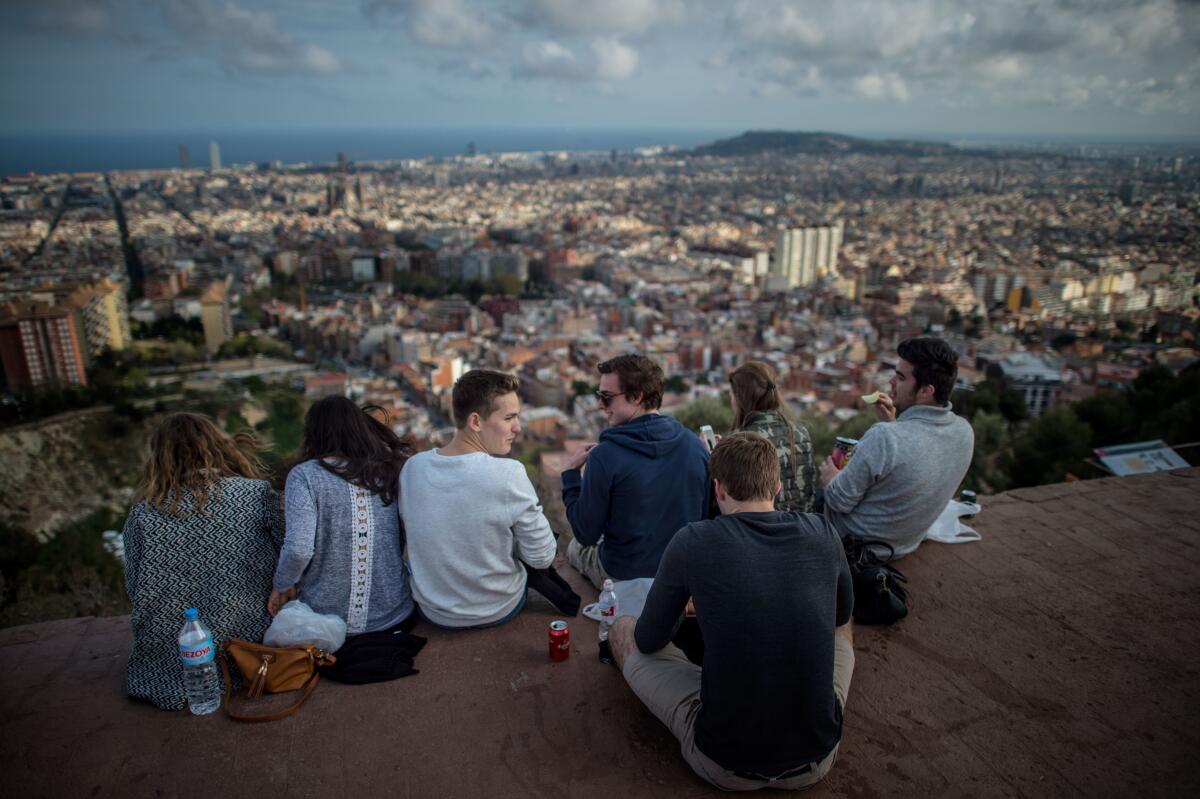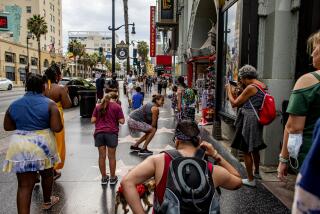The U.S. is losing big-spending foreign tourists â and Trumpâs one reason why

Over the last two years, Spainâs national tourism agency has targeted big-spending cosmopolitan travelers from Europe and the U.S. and promoted foodie vacations in parts of Spain not typically visited by international travelers.
The work has paid off, with Spain recently surpassing the U.S. to become the second-most-visited country in the world by international tourists, behind only France.
For the record:
3:41 p.m. Jan. 24, 2020A previous version of this story erroneously attributed to the U.S. Travel Assn. an estimate that the U.S. collected $215 billion in 2018 while Spain collected $74 billion. That estimate came from the United Nationsâ World Tourism Organization. Also, Javier Rodriguez Manasâ name was misspelled as Javier Rodriquez Manas.
U.S. travel industry leaders, miffed that Spain and a handful of other countries have been outperforming the U.S. in attracting high-spending international tourists, say they are ready to launch a new campaign to help the country retake its spot among the worldâs top tourism destinations.
Part of that effort will involve borrowing from Spainâs playbook by promoting Instagrammable scenery and unique foodie favorite spots in the U.S.
âWe are growing but just not at the pace of the rest of the world,â said Tori Barnes, executive vice president of public affairs for the U.S. Travel Assn., the trade group for the countryâs travel industry.
Although domestic travel in the U.S. is thriving, travel industry leaders worry about losing out on the countryâs share of overseas visitors â so-called long-haul travelers from places such as China and Europe â because they spend an average of about $4,200 per visit, much more than the average domestic traveler, who spends only about $400 per trip.

Spain has boosted its share of international visitors by targeting middle-class and high-income travelers in the U.S. and Europe and by promoting the health benefits of a Mediterranean diet and new experiences such as Flamenco dancing, among other messages, said Javier Rodriguez Manas, director of Spainâs tourism office in Los Angeles.
In addition, he said Spainâs tourism agency invites social media influencers to the country to visit and promote their experiences in Spain. The effort has included posting social media images of bowls of gazpacho, plates of tapas and centuries-old castles.
âWe also get the message out on the internet, on Facebook and Twitter,â he said. âWe are always working with these platforms of promotion. They really work good for us.â
But it wonât be easy for the U.S. to win back foreign tourists who are increasingly heading to alternative vacation spots in Europe and Asia.
The U.S. has seen its share of global international travel drop from 13.7% in 2015 to 11.7% in 2018, with a forecast by the U.S. Travel Assn. suggesting that the rate could drop to 10.9% by 2022.
That drop has been blamed on several factors, including a strong U.S. currency, which makes spending in the U.S. by foreign tourists more expensive. In addition, trade tensions with China have been blamed for a drop in visits by Chinese tourists, who have in the last few years been spending heavily on things such as souvenirs on Hollywood Boulevard and name-brand clothes at outlet malls in Los Angeles.
The efforts to attract foreign visitors also took a blow in 2018 when the Trump administration decided to divert funding away from a coordinated marketing campaign to promote the U.S. to international travelers, dubbed Brand USA. Trump instead funneled the money to help pay for improved border protection.
On top of that, travel industry experts say the president has sent a less-than-welcoming message to would-be foreign visitors by launching a travel ban on mostly Muslim countries and promoting the construction of a wall along the countryâs southern border. The Trump administration may be ready to announce as early as Monday an expansion of that travel ban to include seven new countries, according to Politico.
âWe would like to see a more public articulation from the administration and Congress that would be a welcoming message to international travelers coming here,â Barnes said.
Between 2015 and 2018, the number of long-haul, international visitors to the U.S. has grown by 3.1%, while the increase has been much bigger at other top tourist destinations such as Canada (23%), France (17%), Mexico (49%) and Spain (41%), according to Oxford Economics, a global economics forecasting firm.
âThough domestic travel continues to increase, there continues to be a decline in international inbound travel, which is costing thousands of jobs and billions of dollars for our economy,â said Chip Rogers, chief executive of the American Hotel and Lodging Assn.

The U.S. is still No. 1 when it comes to spending, with $215 billion coming from foreign visitors in 2018. By comparison, Spain drew about $74 billion in spending from foreign travelers, according to the United Nations World Tourism Organization.
But by failing to keep up with its rivals, the U.S. Travel Assn. estimates, the U.S. has lost out on about 14 million more foreign visitors who would have spent an additional $59.4 billion in the U.S. from 2015 to 2018.
Congress recently restored funding for the Brand USA marketing campaign for the next seven years, giving Barnes and other U.S. travel leaders hope that the U.S. can improve the numbers. Launched in 2011 by travel industry leaders, Brand USA is funded by private donations and fees charged to international visitors who register for visas to enter the U.S.
As part of its effort, Brand USA plans to release an IMAX film next month titled âInto Americaâs Wildâ that will feature scenic landscapes including sites in Yosemite National Park, Mono Lake, Channel Islands and Devilâs Postpile National Monument. The film, the third installment of movies created for Brand USA, will be shown over the next several months in theaters in more than a dozen countries, including Mexico, Japan, Russia, China and France.

Opening in IMAX and Giant Screen Theatres February 14, 2020, Into Americaâs Wild, a cross-country adventure into the hidden wonders of the natural world.
Christopher Thompson, chief executive of Brand USA, said he doesnât know exactly how the campaign will market the U.S. over the next seven years but he is sure it will rely heavily on social media posts and promotion of food travel and other new unique experiences that go beyond sightseeing and souvenir shopping.
âItâs all about the diversity of the geography and the diversity of the experience and where you can do that in the U.S.,â he said.
Travel industry experts say bringing international travelers back is vital to the U.S. economy.
âMore foreigners spending money on tourism in the U.S. is good for our economy,â said Curtis Dubay, senior economist for the U.S. Chamber of Commerce. âAround 32 million travelers from overseas have come here to vacation since 2015. From Disney to D.C., we have a lot to offer.â
Erika Richter, a spokeswoman for the American Society of Travel Advisors, said she hopes the campaign will promote the countryâs diverse food offerings to attract ardent tourists whose travels are dictated by their stomachs.
âOur marketing needs to be on point with what the modern traveler is looking for,â she said.
Richter also agreed with other travel experts who say that the Trump administration needs to send a more welcoming message to would-be foreign visitors.
âPolicy decisions affect the perception of the U.S. as an inspirational place to visit,â she said.
More to Read
Inside the business of entertainment
The Wide Shot brings you news, analysis and insights on everything from streaming wars to production â and what it all means for the future.
You may occasionally receive promotional content from the Los Angeles Times.











